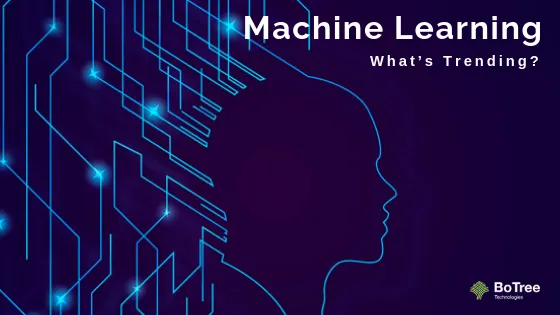

Machine Learning - What’s Trending?
Tending Areas in Artificial Intelligence and Machine Learning

Refining the acknowledged meaning of what qualifies as artificial intelligence (AI) has turned into a restored subject of discussion. Some have re-branded AI as "machine knowledge", while others erroneously exchange AI with simple machine learning program. A definitive objective of AI, is to assemble machines equipped for performing assignments and psychological capacities that are generally just inside the extent of human knowledge. In order to get there, machines must have the capacity to take in these abilities consequently as opposed to having every one of them be unequivocally customized end-to-end.
Tending Areas in Artificial Intelligence and Machine Learning
Some of the trending areas of artificial intelligence and machine learning are:
Deep Learning
Deep learning is a subdivision of AI and machine learning that attempts to imitate our natural anxious system, especially the action in the neocortex part, which is in charge of our reasoning. Not at all like simple machine learning program, are deep learning models prepared utilizing expansive arrangements of information and neural systems. So these models, working increasingly like a human mind, can do characterization assignments from content and pictures specifically.
Automated Machine Learning
Automated machine learning (AutoML) means to dispense with the process of creating simple machine learning program, including getting ready information, choosing highlights and modes, and preparing and tuning them. It can actualize the present algorithms and models in your new application, in this way enhancing proficiency.
Automated Machine Learning can enable business clients to make simple machine learning programs without having inside and out programming information. In contrast with 'run of the mill' artificial intelligence in machine learning methods, it can quicken the advancement similarly as current programming languages have accelerated the traditional software development.
Natural Language Processing
Natural Language Processing (NLP) is a part of artificial intelligence in machine learning which attempts to fill the hole among people and PCs by influencing the latter to comprehend human language. Natural Language processing, as an innovation, enables any PC program to comprehend the human discourse, similarly as a human comprehends another human.
The progression in knowledge of natural language processing can be helpful in instances of text and sentiment examination as executed in search engines and software-based translation services, for example, Google Translate. Another use of Natural Language Processing is enhancing spam filters for battling spam messages and in addition fake news.
Probabilistic Programming
Probabilistic programming is high standard programming to simplify designing and development of probability models. Such programming languages give the adaptability to reuse the available models and their libraries, support statistical modelling and give the essential reflection to diminish the complexities of probabilistic derivation.
In areas where the data is often indeterminate, probabilistic programming languages play a fundamental job in filling the gaps. This programming worldview will see huge reception, attributable to its aggressive outcomes in decreasing the endeavors of composing adaptable models as a short probabilistic code.
BoTreeTechnologies, for years, has been working towards developing artificial intelligence and machine learning solutions that are adaptable and scalable according to your business.





